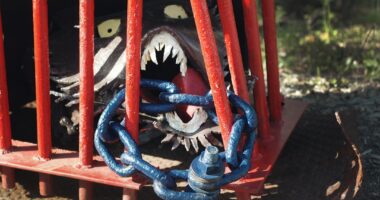Non-Fungible Tokens (NFTs) have significantly impacted the digital art and graphic design industries. NFTs are unique digital assets authenticated using blockchain technology, ensuring their originality and ownership. This innovation has created new opportunities for graphic designers to monetize their work by tokenizing and selling it in a novel way.
Unlike traditional art forms, NFTs maintain their value through their uniqueness, appealing to collectors and investors who value exclusivity. The integration of NFTs into graphic design presents both opportunities and challenges. Designers must familiarize themselves with blockchain technology, smart contracts, and various NFT platforms.
Environmental concerns related to blockchain mining have also sparked discussions about sustainability within the artistic community. As graphic designers explore the NFT space, they need to stay informed about these issues while continuing to develop their creative skills. The convergence of technology and creativity in the NFT realm offers new possibilities for graphic designers but also requires them to adapt to a rapidly changing landscape.
Designers must balance the technical aspects of NFTs with their artistic vision to create compelling digital art that resonates with audiences in this emerging market.
Key Takeaways
- NFTs are digital assets that represent ownership of unique items, and they are revolutionizing the graphic design industry.
- Developing a unique style and brand is crucial for standing out as an NFT graphic designer in a competitive market.
- Utilizing the right tools and software, such as Adobe Creative Suite and Procreate, can enhance the quality of NFT graphic design work.
- Building a strong portfolio and online presence on platforms like Behance and Instagram is essential for showcasing NFT graphic design work to potential collectors.
- Networking and collaborating with other NFT artists and collectors can lead to valuable opportunities for exposure and growth in the NFT graphic design community.
- Navigating the NFT marketplace and understanding the process of selling art as NFTs is key to success in the industry.
- Staying updated with trends and innovations in NFT graphic design is important for remaining relevant and competitive in the ever-evolving NFT market.
Developing Your Unique Style and Brand as an NFT Graphic Designer
Developing a Signature Aesthetic
By developing a signature aesthetic, designers can create a recognizable body of work that resonates with collectors and fans alike. This individuality not only enhances the appeal of their NFTs but also fosters a deeper connection with their audience, as collectors are often drawn to the stories and emotions behind the art. Branding extends beyond just visual elements; it encompasses the artist’s narrative, values, and engagement with the community.
Positioning Yourself in the Digital Art Space
NFT graphic designers should consider how they want to position themselves within the digital art space. This includes crafting an engaging artist statement that articulates their creative journey and intentions behind their work. Additionally, leveraging social media platforms to share insights into their creative process can help build a loyal following.
Building a Strong Brand Identity
By actively participating in discussions around NFTs and collaborating with other artists, designers can further solidify their brand identity while contributing to the broader conversation about digital art. Ultimately, a well-defined style and brand not only attract collectors but also establish the designer as a credible figure within the NFT ecosystem.
Utilizing the Right Tools and Software for NFT Graphic Design

The right tools and software are crucial for NFT graphic designers looking to create high-quality digital art that stands out in the marketplace. A variety of design programs are available, each offering unique features that cater to different artistic needs. Popular software such as Adobe Creative Suite provides powerful capabilities for graphic design, allowing artists to manipulate images, create vector graphics, and produce stunning visual compositions.
Additionally, programs like Procreate have gained traction among digital artists for their intuitive interface and versatility on tablet devices. By mastering these tools, designers can enhance their creative output and produce work that meets the high standards expected in the NFT space. Moreover, understanding how to effectively use 3D modeling software can significantly expand an artist’s repertoire.
Programs like Blender or Cinema 4D enable designers to create immersive experiences that go beyond traditional 2D art. As NFTs evolve, incorporating elements such as animation or interactive features can add value to digital pieces, making them more appealing to collectors. Furthermore, staying updated with emerging technologies like augmented reality (AR) or virtual reality (VR) can provide additional avenues for creativity and innovation.
By leveraging these tools effectively, NFT graphic designers can push the boundaries of their work while ensuring they remain competitive in an ever-changing market.
Building a Strong Portfolio and Online Presence
A strong portfolio is essential for any graphic designer looking to make a mark in the NFT space. This collection of work serves as a visual resume that showcases an artist’s skills, style, and versatility. When curating a portfolio for NFTs, it is important to include not only completed pieces but also works in progress or experimental projects that highlight the designer’s creative process.
This transparency can engage potential buyers by providing insight into the artist’s journey and thought process behind each piece. Additionally, presenting work in a visually appealing manner—such as through high-quality images or interactive displays—can enhance the overall impact of the portfolio. In tandem with a robust portfolio, establishing an online presence is crucial for reaching a wider audience.
Social media platforms like Instagram, Twitter, and TikTok have become vital tools for artists to share their work and connect with potential collectors. Regularly posting updates about new projects, behind-the-scenes content, or even live-streaming creative sessions can foster engagement and build a community around an artist’s brand. Furthermore, creating a personal website or utilizing platforms specifically designed for showcasing NFTs can provide a centralized location for collectors to view and purchase artwork.
By strategically combining a strong portfolio with an active online presence, NFT graphic designers can significantly increase their visibility and attract interest from buyers.
Networking and Collaborating with Other NFT Artists and Collectors
Networking plays an integral role in the success of NFT graphic designers as they navigate this burgeoning industry. Building relationships with other artists can lead to valuable collaborations that enhance creativity and expand reach within the community. Participating in online forums, attending virtual events, or joining social media groups dedicated to NFTs can facilitate connections with like-minded individuals who share similar interests and goals.
These interactions often lead to collaborative projects that not only enrich an artist’s portfolio but also introduce them to new audiences who may be interested in their work. Moreover, engaging with collectors is equally important for establishing credibility within the NFT space. Collectors often seek out artists whose work resonates with them on a personal level; therefore, fostering genuine relationships can lead to increased sales opportunities.
By participating in discussions about art trends or sharing insights into their creative process, designers can position themselves as knowledgeable contributors to the community. Additionally, attending exhibitions or virtual showcases where collectors gather can provide invaluable networking opportunities. Ultimately, building a robust network of fellow artists and collectors can significantly enhance an NFT graphic designer’s career trajectory.
Navigating the NFT Marketplace and Selling Your Art

Understanding how to navigate the NFT marketplace is crucial for graphic designers looking to sell their art effectively. Various platforms exist for minting and selling NFTs, each with its own unique features, fees, and audience demographics. Popular marketplaces such as OpenSea, Rarible, and Foundation offer different levels of accessibility and exposure for artists.
It is essential for designers to research these platforms thoroughly to determine which aligns best with their artistic goals and target audience. Additionally, understanding the intricacies of gas fees—transaction costs associated with blockchain operations—can help artists price their work appropriately while maximizing profits. Once an artist has chosen a platform, creating compelling listings is key to attracting potential buyers.
This includes writing engaging descriptions that convey the story behind each piece while highlighting its unique attributes. High-quality visuals are also essential; showcasing artwork through eye-catching images or videos can significantly enhance its appeal in a crowded marketplace. Furthermore, leveraging social media to promote new releases or limited-time offers can create buzz around an artist’s work, driving traffic to their listings.
By strategically navigating the NFT marketplace and employing effective marketing techniques, graphic designers can successfully sell their art while building a loyal collector base.
Staying Updated with Trends and Innovations in NFT Graphic Design
The world of NFT graphic design is characterized by rapid evolution; therefore, staying updated with trends and innovations is vital for artists seeking long-term success in this dynamic field. Following industry news through blogs, podcasts, or social media channels dedicated to NFTs can provide valuable insights into emerging technologies or shifts in consumer preferences. Additionally, participating in webinars or online courses focused on blockchain technology or digital art trends can enhance an artist’s knowledge base while fostering professional growth.
Moreover, engaging with fellow artists through online communities or forums can facilitate discussions about current trends and best practices within the NFT space. Collaborating on projects or sharing experiences can lead to innovative ideas that push creative boundaries while keeping pace with industry developments. As new tools and technologies emerge—such as AI-generated art or advancements in virtual reality—graphic designers must remain adaptable and open-minded to incorporate these innovations into their work.
By actively seeking out knowledge and embracing change, NFT graphic designers can position themselves at the forefront of this exciting artistic frontier while ensuring their relevance in an ever-evolving market landscape.
FAQs
What is an NFT graphic designer?
An NFT graphic designer is a professional who creates digital artwork specifically for the purpose of being sold as non-fungible tokens (NFTs) on blockchain platforms.
What are some tips for becoming a successful NFT graphic designer?
Some tips for becoming a successful NFT graphic designer include honing your digital art skills, understanding the NFT market and trends, building a strong online presence, networking with other NFT artists and collectors, and staying updated on blockchain technology and NFT platforms.
What tools are essential for NFT graphic designers?
Essential tools for NFT graphic designers include graphic design software such as Adobe Photoshop or Illustrator, a digital drawing tablet, a reliable computer with good processing power, and knowledge of blockchain technology and NFT platforms.
How can NFT graphic designers protect their work from plagiarism?
NFT graphic designers can protect their work from plagiarism by minting their artwork as NFTs on blockchain platforms, which provides a unique digital signature and proof of ownership. Additionally, they can consider using watermarks or embedding metadata into their digital files.





